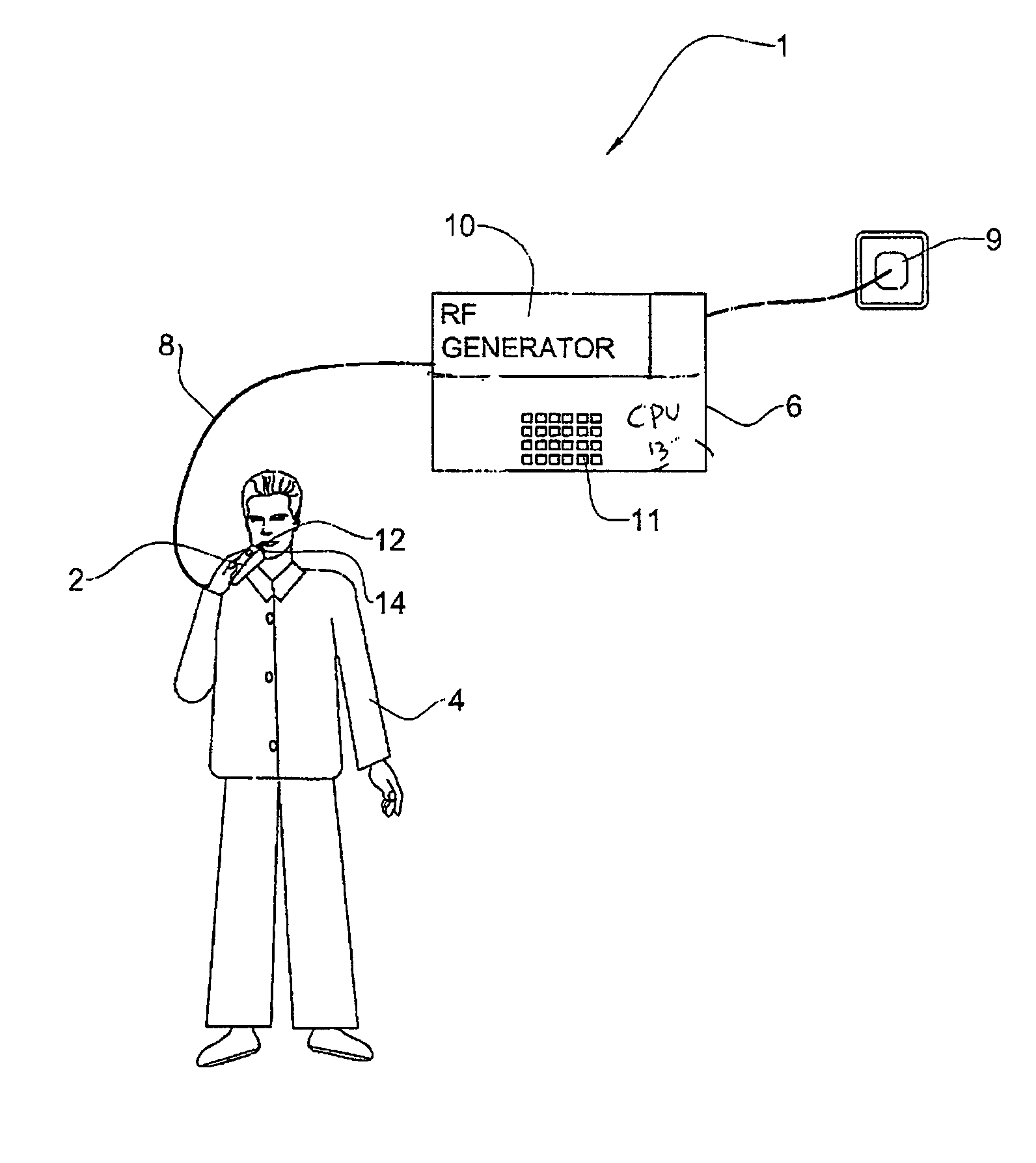Device and method for treating skin with temperature control
a skin temperature and device technology, applied in the field of skin temperature control devices, can solve the problems of limiting the control of tissue heating, user stopping treatment, permanent scarring or other damage to the skin surface, etc., and achieve the effect of avoiding overheating of the skin and controlling the skin temperatur
- Summary
- Abstract
- Description
- Claims
- Application Information
AI Technical Summary
Benefits of technology
Problems solved by technology
Method used
Image
Examples
Embodiment Construction
[0028]FIG. 1 shows a system 1 for treating skin in accordance with one embodiment of the invention. The system 1 includes a hand held applicator 2 that is used to apply RF energy to the skin of an individual 4. The applicator 2 is connected to a control unit 6 via a harness 8. The control unit 6 includes an RF generator 10 that generates a continuous wave or quasi-continuous RF voltage across a pair of electrodes 12 and 14 in the applicator 2. The control unit 10 also includes a CPU 13 and an input device such as a key pad 11 for inputting to the CPU 13 the wavelength and amplitude of the RF voltage generated by the RF generator 10 as required in any particular skin treatment. The RF generator is connected to the electrodes 12 and 14 by a pair of wires in the harness 8. The system 1 may be plugged into a wall electrical socket 9, as shown in FIG. 1 or use batteries (not shown) that are preferably rechargeable.
[0029]FIGS. 2 and 3 show an applicator 2a in accordance with one embodime...
PUM
 Login to View More
Login to View More Abstract
Description
Claims
Application Information
 Login to View More
Login to View More - R&D
- Intellectual Property
- Life Sciences
- Materials
- Tech Scout
- Unparalleled Data Quality
- Higher Quality Content
- 60% Fewer Hallucinations
Browse by: Latest US Patents, China's latest patents, Technical Efficacy Thesaurus, Application Domain, Technology Topic, Popular Technical Reports.
© 2025 PatSnap. All rights reserved.Legal|Privacy policy|Modern Slavery Act Transparency Statement|Sitemap|About US| Contact US: help@patsnap.com



